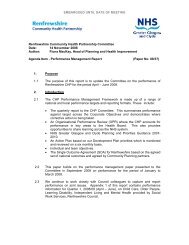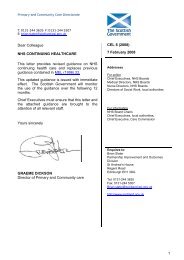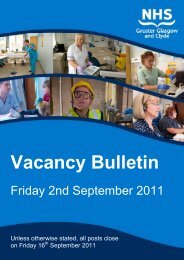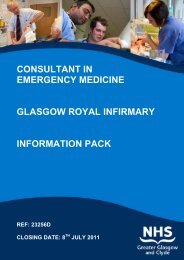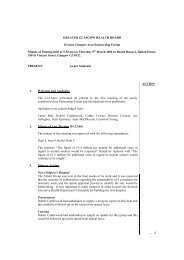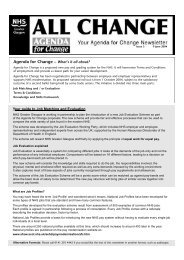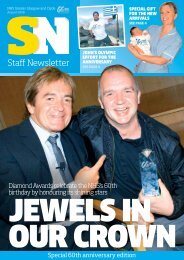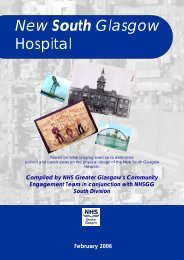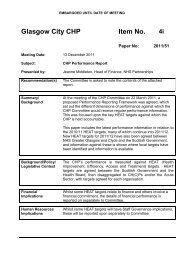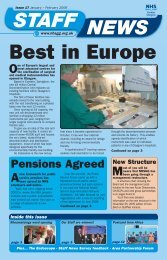Annual Report and Clinical Governance Report 2008 to 2009
Annual Report and Clinical Governance Report 2008 to 2009
Annual Report and Clinical Governance Report 2008 to 2009
Create successful ePaper yourself
Turn your PDF publications into a flip-book with our unique Google optimized e-Paper software.
A <strong>to</strong>tal of 10 legal files were opened via solici<strong>to</strong>rs’ requests on the behalf of clients<br />
<strong>and</strong> with their m<strong>and</strong>ated written consent for information; These were all in regard<br />
<strong>to</strong> information <strong>to</strong> support the clients with for example asylum status application or<br />
confirming attendance within counselling services<br />
<strong>Report</strong>s on adverse events<br />
In this financial year S<strong>and</strong>yford recorded adverse events under fac<strong>to</strong>rs according <strong>to</strong><br />
our adverse event framework. Fac<strong>to</strong>rs identified are client fac<strong>to</strong>rs; institutional<br />
fac<strong>to</strong>rs; individual staff fac<strong>to</strong>rs; task fac<strong>to</strong>rs; team fac<strong>to</strong>rs <strong>and</strong> work <strong>and</strong><br />
environmental fac<strong>to</strong>rs.<br />
Our rationale for this was <strong>to</strong> assist staff in identifying fac<strong>to</strong>rs in which an adverse<br />
event may occur within the organisation allowing for any additional fac<strong>to</strong>rs <strong>to</strong> be<br />
added where this was necessary <strong>and</strong> moni<strong>to</strong>red.<br />
For example, verbal aggression was not part of the adverse event framework<br />
previously however as staff reported their experiences of verbal aggression they<br />
were in turn encouraged <strong>to</strong> report this <strong>to</strong> the service. It demonstrated an increase<br />
in verbal aggression being reported which in turn enabled the organisation <strong>to</strong><br />
deliver training through partnership <strong>to</strong> members of staff particularly those who<br />
were deemed <strong>to</strong> be in frontline areas (nurse telephone helpline, switchboard <strong>and</strong><br />
receptions staff ).<br />
Table 1 identifies from 2006 a year on year increase in adverse event reporting. One<br />
explanation for this increase is that since the integration of two previous health<br />
boards (NHS Argyll & Clyde <strong>and</strong> NHS Greater Glasgow) all S<strong>and</strong>yford services are<br />
now reporting adverse events as they arise according <strong>to</strong> the adverse event<br />
framework. In <strong>2008</strong>-<strong>2009</strong> there was 0.6% of adverse events reported from 136,020<br />
<strong>to</strong>tal attendances throughout S<strong>and</strong>yford services in NHS Greater Glasgow & Clyde.<br />
Table 1: Record of Adverse Events<br />
1000<br />
900<br />
800<br />
700<br />
600<br />
500<br />
400<br />
300<br />
200<br />
100<br />
0<br />
2002-<br />
2003<br />
2003-<br />
2004<br />
2004-<br />
2005<br />
2006-<br />
2007<br />
2007-<br />
<strong>2008</strong><br />
<strong>2008</strong>-<br />
<strong>2009</strong><br />
60 < < back <strong>to</strong> contents




